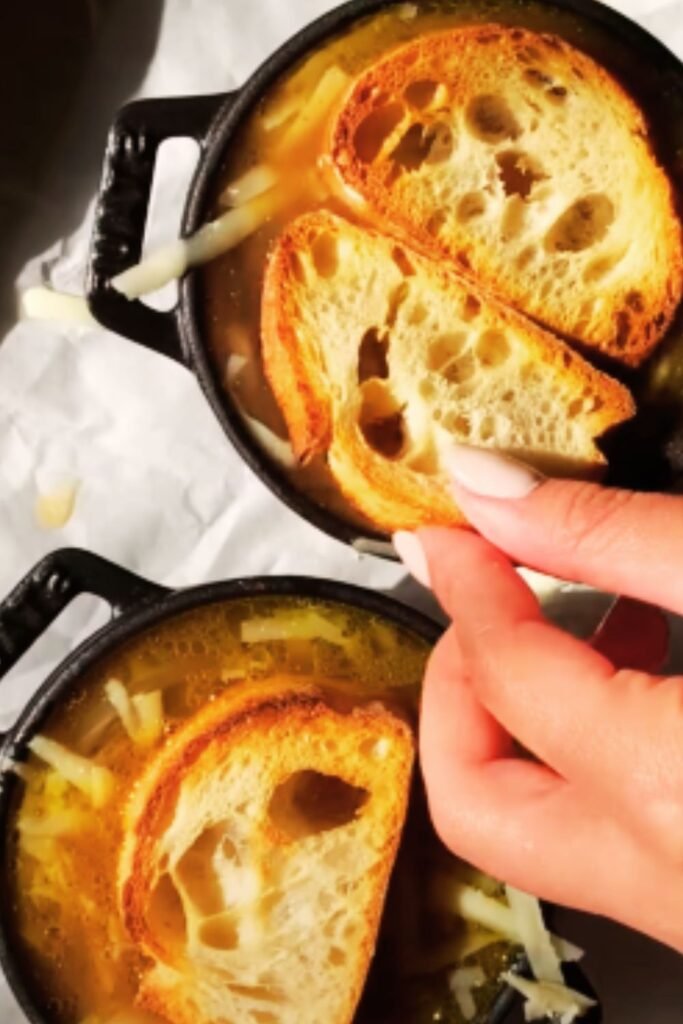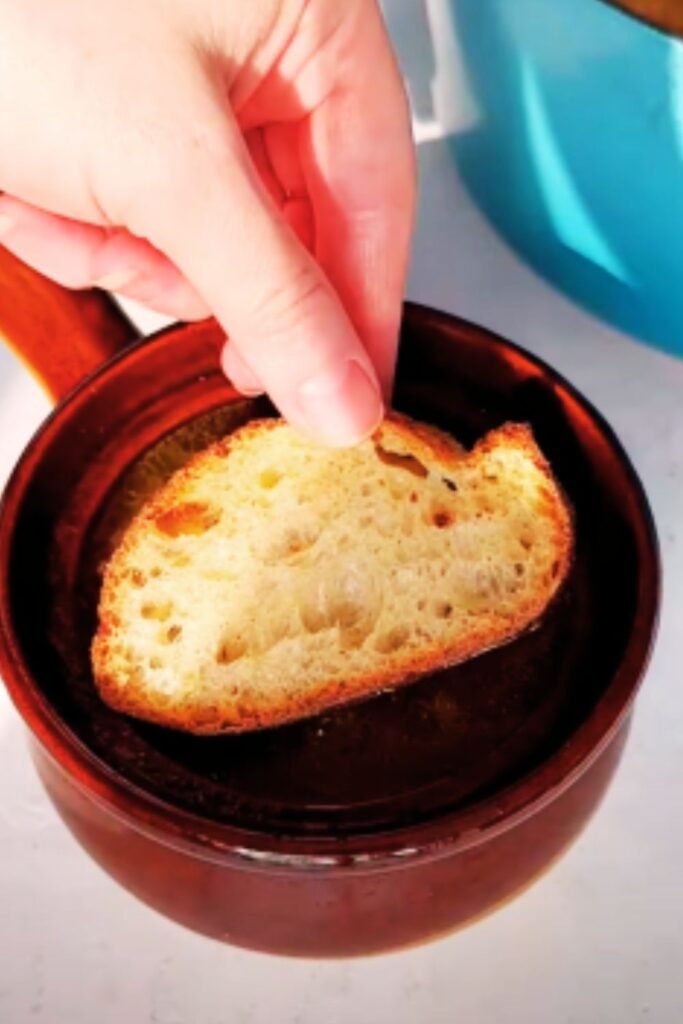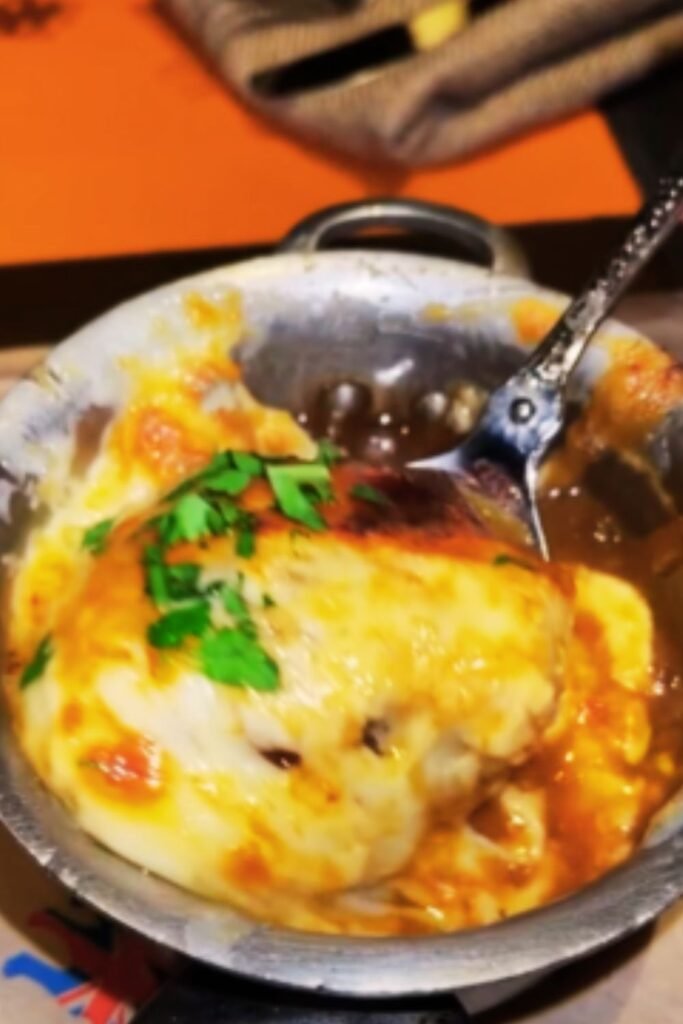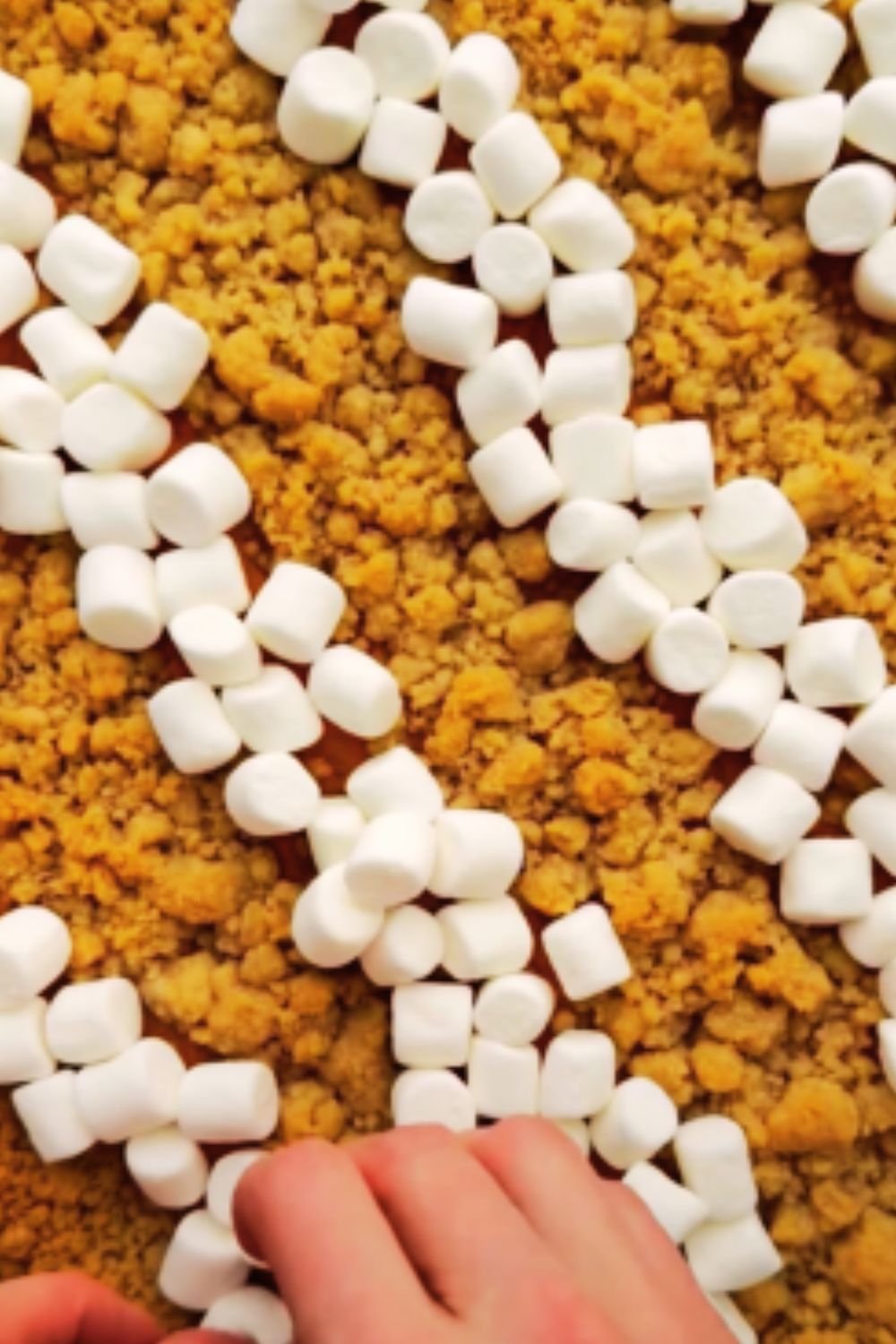There’s something magical about a perfectly crafted bowl of French onion soup. The deep, caramelized flavor of the broth, the soft, sweet onions, and that irresistible crown of melted cheese on top—it’s comfort food that somehow manages to be both rustic and elegant at the same time. As someone who has spent years perfecting this classic recipe, I’m excited to share not just the steps, but all the little secrets that transform this simple dish into something truly extraordinary.
The Rich History Behind French Onion Soup
French onion soup, or “soupe à l’oignon” as it’s known in France, has humble beginnings dating back centuries. Onions have been abundant and affordable throughout history, making them a staple ingredient for peasant cooking. The modern version of this soup as we know it today originated in 18th century France, but versions of onion soup have been documented as far back as Roman times.
What many people don’t realize is that this soup was traditionally considered a late-night restorative meal. In Paris, it became popular among market workers and late-night revelers who would stop by Les Halles (the central market district) in the early morning hours for a revitalizing bowl after a night out.
I find it fascinating how a dish that began as a way to stretch ingredients for the poor has transformed into one of the most celebrated French culinary exports. The soup gained international popularity in the 1960s when French cuisine began captivating American diners, and it hasn’t lost its appeal since.
Essential Ingredients: Understanding What Makes This Soup Special
The beauty of French onion soup lies in its simplicity. With so few ingredients, each one matters tremendously. Here’s what you’ll need to create an authentic version:
Onions
Yellow onions are the traditional choice, though some regions in France use a mix of yellow and red. I’ve experimented extensively and found that yellow onions provide the perfect balance of sweetness and savory depth when caramelized properly. You’ll need about 2 pounds (approximately 6-7 medium onions) for a standard batch serving 4-6 people.
Stock
While beef stock is most common in modern recipes, traditional French versions often used bone broth or even water. The stock provides the foundation of flavor, so homemade is worth the effort if you have the time. If using store-bought, look for low-sodium options that will allow you to control the seasoning.
Wine
A dry white wine adds acidity and complexity. Some recipes call for red wine or even cognac, but I find white wine creates a cleaner, more balanced flavor that lets the caramelized onions shine. You’ll only need about half a cup, so don’t feel obligated to use an expensive bottle – just something you’d enjoy drinking.
Bread
The floating island of bread must be sturdy enough to hold up under the broth and cheese. Traditional French baguette sliced on the diagonal is ideal, though country bread or sourdough works beautifully too. Day-old bread is preferred as it absorbs the broth without disintegrating.
Cheese
Gruyère is the classic choice, offering the perfect melting properties and nutty flavor. Some recipes blend Gruyère with Comté or Emmental. What’s crucial is using a good-quality aged cheese that creates that irresistible stringy, melted texture.
Herbs and Seasonings
Fresh thyme, bay leaves, and sometimes a small amount of garlic are the traditional aromatics. Restraint is key – you want to enhance the onion flavor, not overshadow it.

The Secret to Perfect Caramelization
The soul of French onion soup lies in properly caramelized onions. This step cannot be rushed – it’s what transforms the sharp, pungent raw onion into sweet, deep amber strands of flavor magic. I’ve learned through many batches that patience truly is the key ingredient here.
The caramelization process involves slow-cooking the onions until the natural sugars break down, creating that distinctive rich, sweet flavor. This isn’t just a matter of browning onions; it’s a careful transformation that can take 45 minutes to an hour.
Here’s my detailed process for perfect caramelization:
- Slice the onions thinly and uniformly. I prefer slicing from pole to pole (rather than crosswise) which helps the onions hold their shape during long cooking.
- Use a heavy-bottomed pot or Dutch oven that distributes heat evenly. Cast iron or enameled cast iron are ideal.
- Begin with a combination of butter and oil. The butter provides flavor while the oil prevents burning at higher temperatures.
- Start cooking the onions over medium heat just until they begin to soften and become translucent.
- Reduce the heat to medium-low and continue cooking, stirring occasionally to prevent sticking.
- Add a pinch of salt early in the process – this helps draw out moisture and speeds caramelization.
- Be vigilant about scraping the bottom of the pot as you stir. Those browned bits contain concentrated flavor.
- If the onions start to stick too much, add a tablespoon of water or stock to deglaze the pan rather than adding more fat.
- Resist the urge to increase the heat. Proper caramelization can’t be rushed without sacrificing flavor.
- The onions are ready when they’ve reduced to about a quarter of their original volume and have turned a deep golden-brown color.
A common mistake I’ve observed is confusing browned onions with properly caramelized ones. Browning can happen in 15 minutes, but caramelization is a longer process that completely transforms both the texture and flavor of the onions.
Classic French Onion Soup Recipe
Now that we understand the ingredients and the importance of caramelization, let’s put everything together to create a truly authentic French onion soup.
Ingredients
- 2 pounds (about 6-7) yellow onions, thinly sliced
- 3 tablespoons unsalted butter
- 1 tablespoon olive oil
- 1 teaspoon salt
- 1/4 teaspoon granulated sugar (to help with caramelization)
- 2 cloves garlic, minced
- 2 tablespoons all-purpose flour
- 1/2 cup dry white wine
- 6 cups high-quality beef stock
- 2 bay leaves
- 4 sprigs fresh thyme
- Freshly ground black pepper to taste
- 1 French baguette, cut into 1-inch slices
- 2 tablespoons olive oil for brushing bread
- 2 cups grated Gruyère cheese
- 1/4 cup freshly grated Parmesan cheese
Equipment Needed
| Equipment | Purpose | Notes |
|---|---|---|
| Dutch oven or heavy pot | For caramelizing onions and making soup | 6-quart capacity is ideal |
| Wooden spoon | For stirring and scraping | Wood won’t scratch enamel or cast iron |
| Chef’s knife | For slicing onions | Keep it sharp for even cuts |
| Mandoline (optional) | For uniform onion slices | Use with guard for safety |
| Oven-safe soup bowls | For final broiling step | Must withstand high heat |
| Baking sheet | For toasting bread | Also supports soup bowls under broiler |
| Cheese grater | For fresh grated cheese | Box grater or microplane |
| Ladle | For serving | Deep ladle works best |
Step-by-Step Process
- Prep the onions: Slice all onions thinly and uniformly. I find that halving the onions from pole to pole, then slicing into half-moons gives the best texture in the finished soup.
- Begin caramelization: In a large Dutch oven or heavy-bottomed pot, heat the butter and olive oil over medium heat. Add all the sliced onions and 1/2 teaspoon of salt. Stir to coat the onions in fat.
- Initial cooking phase: Cook the onions for about 15 minutes, stirring occasionally until they become soft and translucent.
- Slow caramelization: Reduce heat to medium-low, add the sugar, and continue cooking for 30-45 minutes, stirring every 5-10 minutes. Be patient – this slow process develops the complex sweet flavors that make this soup special.
- Monitor and deglaze: As onions begin to stick to the bottom of the pot, scrape with a wooden spoon to incorporate those flavorful browned bits back into the onions. If needed, add a tablespoon of water to help release stuck bits.
- Add garlic: When onions are deeply caramelized to a rich brown color, add the minced garlic and cook for an additional 1-2 minutes until fragrant.
- Create a light roux: Sprinkle flour over the onions and cook, stirring constantly, for 2-3 minutes to remove the raw flour taste.
- Deglaze with wine: Add the white wine and increase heat to medium-high, scraping the bottom of the pot to release any remaining browned bits. Let the wine simmer until it has reduced by about half.
- Add stock and herbs: Pour in the beef stock, add the bay leaves and thyme (tied together with kitchen twine if possible), and the remaining salt and pepper. Bring to a gentle boil, then reduce heat and simmer, partially covered, for 30 minutes.
- Prepare the bread: While the soup simmers, preheat your oven to 400°F (200°C). Brush both sides of the baguette slices with olive oil, arrange on a baking sheet, and toast in the oven until golden brown and crisp, about 5-7 minutes per side. Set aside.
- Prepare for serving: Preheat your broiler. Remove the bay leaves and thyme sprigs from the soup. Taste and adjust seasoning as needed.
- Assemble: Ladle the hot soup into oven-safe bowls placed on a baking sheet. Float 1-2 pieces of the toasted bread on top of each bowl of soup. Cover generously with grated Gruyère and a sprinkle of Parmesan.
- Broil: Place the baking sheet with filled soup bowls under the broiler until the cheese is melted, bubbly, and beginning to brown, about 3-5 minutes. Watch carefully to prevent burning.
- Rest and serve: Allow the soup to cool for a few minutes (the bowls will be extremely hot), then serve.

Variations and Regional Differences
While my recipe aims for authenticity, I’ve discovered interesting regional variations worth mentioning:
Lyon Style
In Lyon, the soup is often made with chicken stock rather than beef, creating a lighter flavor profile. Some Lyonnaise recipes also include a splash of brandy.
Normandy Variation
In Normandy, where apple production is prevalent, some chefs add a small amount of apple cider or Calvados (apple brandy) to the broth.
Modern Adaptations
Contemporary chefs have created interesting variations using caramelized shallots or leeks alongside onions, or incorporating different herbs like sage or rosemary. Some upscale restaurants serve the soup with a small amount of foie gras or truffle shavings.
Vegetarian Version
For a vegetarian adaptation, use a rich mushroom stock instead of beef. The umami qualities of mushrooms provide a depth of flavor that complements the caramelized onions beautifully.
Troubleshooting Common Issues
Over years of making this soup and teaching others, I’ve encountered several common problems and found reliable solutions:
| Issue | Possible Cause | Solution |
|---|---|---|
| Soup lacks depth of flavor | Under-caramelized onions | Extend caramelization time; ensure deep brown color |
| Weak stock | Use homemade stock or reduce commercial stock by 25% before using | |
| Insufficient seasoning | Add salt gradually throughout cooking process | |
| Onions burning instead of caramelizing | Heat too high | Lower temperature and extend cooking time |
| Pot too thin | Switch to heavier pot with better heat distribution | |
| Insufficient stirring | Stir more frequently, especially as onions darken | |
| Cheese not forming perfect crust | Wrong cheese type | Use aged Gruyère with proper fat content |
| Bread floating | Toast bread more thoroughly before adding to soup | |
| Broiler not hot enough | Preheat broiler fully before adding soup bowls | |
| Soup too sweet | Onion variety | Mix yellow with red onions for balance |
| Added too much sugar | Omit added sugar entirely | |
| Balance needed | Add a splash of vinegar or more wine | |
| Bread dissolves in soup | Fresh bread used | Use day-old bread or toast more thoroughly |
| Bread sliced too thin | Cut bread at least 3/4-inch thick | |
| Too long under broiler | Reduce broiling time |
Make-Ahead and Storage Tips
One of the wonderful things about French onion soup is that it actually improves with time. Here’s how to make it work for your schedule:
Make-Ahead Options
- Caramelize onions in advance: The longest part of the process can be completed up to 3 days ahead. Store cooled caramelized onions in an airtight container in the refrigerator.
- Complete soup base: Make the soup through step 9 up to 2 days ahead. Cool completely and refrigerate. Reheat gently before continuing with the recipe.
- Prep components separately: Toast bread and grate cheese up to 24 hours in advance. Store bread in a paper bag at room temperature and cheese in the refrigerator.
Storage Guidelines
- Refrigeration: Leftover soup (without bread and cheese) will keep for up to 5 days in the refrigerator in an airtight container.
- Freezing: The base soup freezes beautifully for up to 3 months. Thaw overnight in the refrigerator before reheating.
- Reheating: Warm refrigerated soup over medium-low heat until hot. Add fresh bread and cheese toppings before broiling for best results.
Serving Suggestions
French onion soup can stand alone as a hearty appetizer or be part of a larger meal. Here are some traditional and creative serving ideas:
As a Starter
Traditionally, this soup serves as a robust first course before a lighter main dish like a simple roast chicken or fish.
As a Main Course
When served in larger portions with a side salad and additional bread, it becomes a satisfying lunch or light dinner.
Perfect Pairings
- Salads: A simple green salad with a light vinaigrette provides a refreshing contrast to the rich soup.
- Sandwiches: A half sandwich on crusty bread—perhaps with ham and Gruyère—makes a perfect lunch combination.
- Fruits: Sliced apples or pears offer a sweet, crisp contrast.
Presentation Ideas
For special occasions, consider these elegant presentation options:
- Serve in hollowed-out small round bread loaves
- Top with herbed croutons instead of a single bread slice
- Add a small sprig of fresh thyme as garnish after broiling
- Use individual cast iron cocottes for a rustic, traditional look

Nutritional Information
While French onion soup is undeniably delicious, it’s helpful to understand its nutritional profile. Below is an approximate breakdown per serving (based on 6 servings from the recipe):
| Nutrient | Amount per Serving | % Daily Value* |
|---|---|---|
| Calories | 385 | – |
| Total Fat | 21g | 27% |
| Saturated Fat | 10g | 50% |
| Cholesterol | 45mg | 15% |
| Sodium | 890mg | 39% |
| Total Carbohydrate | 31g | 11% |
| Dietary Fiber | 3g | 11% |
| Sugars | 8g | – |
| Protein | 17g | 34% |
| Calcium | 320mg | 25% |
| Iron | 1.8mg | 10% |
| Potassium | 450mg | 10% |
| Vitamin C | 8mg | 9% |
*Based on a 2,000 calorie diet
Note that sodium content can vary significantly based on the stock used. For a lower-sodium version, use unsalted or low-sodium stock and adjust salt to taste.
Health Considerations and Adaptations
While traditional French onion soup is rich and indulgent, there are several ways to adapt it for different dietary needs:
Lower-Calorie Version
- Use less cheese (2/3 the amount)
- Reduce butter by half and increase olive oil proportion
- Use smaller bread slices or fewer croutons
Lower-Sodium Option
- Use unsalted homemade stock
- Reduce added salt and compensate with herbs and black pepper
- Choose lower-sodium cheese varieties
Gluten-Free Adaptation
- Substitute rice flour or corn starch for wheat flour (use half the amount)
- Serve with gluten-free bread or omit bread entirely and just top with cheese
- Ensure your stock is gluten-free (some commercial brands contain gluten)
Dairy-Free Version
- Use olive oil instead of butter for caramelizing
- Skip the cheese topping or use a plant-based cheese alternative
- Consider a sprinkle of nutritional yeast for a cheese-like flavor
Frequently Asked Questions
Q: Why does my French onion soup taste bitter?
A: Bitterness usually comes from onions that have burned rather than caramelized. Make sure you’re cooking at a low enough temperature and stirring frequently enough to prevent burning. Also, be sure to use yellow onions rather than white onions, which can sometimes contribute bitterness.
Q: Can I make this soup without wine?
A: Absolutely! While wine adds complexity, you can substitute with additional beef stock and a tablespoon of balsamic vinegar for acidity. Apple cider or white grape juice with a splash of vinegar can also work as alternatives.
Q: How do I prevent the cheese from sinking into the soup?
A: Make sure your bread is well-toasted and completely covers the surface of the soup. Also, don’t overload the bread with cheese – a moderate layer that covers the bread entirely works best.
Q: Can I use a different cheese if I can’t find Gruyère?
A: Yes, Swiss cheese, Emmental, Comté, or even Fontina can work well. Look for a good melting cheese with a nutty flavor. Regular mozzarella lacks the flavor complexity but will give you the desired texture if combined with a more flavorful cheese like Parmesan.
Q: My onions aren’t turning brown despite cooking for a long time. What’s wrong?
A: You might be cooking at too low a temperature or your pot might be overcrowded. Make sure onions have enough space and surface contact. Also, adding a pinch of sugar can help kickstart caramelization.
Q: Is it worth making my own beef stock for this recipe?
A: While homemade stock does elevate the soup, using a high-quality store-bought beef stock is perfectly acceptable. If using store-bought, I recommend simmering it with a few extra aromatics (like additional thyme, peppercorns, and perhaps a small piece of star anise) for 20-30 minutes before using.
Q: How do you eat French onion soup properly?
A: Traditional French etiquette suggests using both a soup spoon and a knife and fork. Use the knife and fork to cut through the cheese and bread, then the spoon to enjoy the soup. However, in casual settings, just a soup spoon works fine – cut the cheesy bread with the edge of your spoon as you go.
Final Thoughts: Why This Soup Endures
I believe French onion soup has maintained its popularity through centuries because it represents culinary alchemy at its finest – transforming humble ingredients into something greater than the sum of its parts. It teaches us patience in the kitchen and rewards us with unparalleled comfort.
What I love most about this dish is its honesty. There’s no hiding behind elaborate techniques or exotic ingredients. Success comes from respecting each step of the process and understanding that time is a crucial ingredient.
Whether you’re making it for a special dinner party or as a cozy meal on a cold night, this soup connects us to generations of cooks who have found ways to create extraordinary flavor from ordinary ingredients. In our fast-paced world, taking the time to properly caramelize onions and build layers of flavor is almost a rebellious act – a reminder that some things simply cannot and should not be rushed.
I hope this guide inspires you to embrace the process and create your own perfect pot of French onion soup. The deep satisfaction of watching someone take that first bite – pulling up the stretchy, golden cheese and then tasting the rich, sweet broth – makes every minute of preparation worthwhile.
Q&A Section
Q: What’s the biggest mistake people make when preparing French onion soup?
A: Without question, rushing the caramelization process. Those deeply browned, sweet onions are the foundation of the entire dish, and there’s simply no shortcut. The difference between onions cooked for 15 minutes versus 45 minutes is remarkable. Patience truly pays off here.
Q: Can I prepare French onion soup in a slow cooker?
A: While you can finish the soup in a slow cooker after properly caramelizing the onions on the stovetop, I don’t recommend caramelizing onions in a slow cooker. The process requires careful monitoring and occasional deglazing that just doesn’t work well in a slow cooker environment. Caramelize on the stovetop first, then transfer to a slow cooker with the remaining ingredients if desired.
Q: Is French onion soup difficult to make?
A: It’s not difficult in terms of technique, but it does require patience and attention. The actual hands-on time is minimal – most of the cooking time is passive, just requiring occasional stirring. If you can slice onions and stir a pot, you can make excellent French onion soup. The challenge lies in having the patience to let the caramelization process happen properly.
Q: What’s your secret ingredient for exceptional French onion soup?
A: Time is truly the secret ingredient, but beyond that, I find that adding a small piece of parmesan rind to the simmering broth adds incredible depth. I remove it before serving, but it infuses the soup with a subtle umami quality that complements the sweet onions beautifully. Just make sure to remove it before serving.


